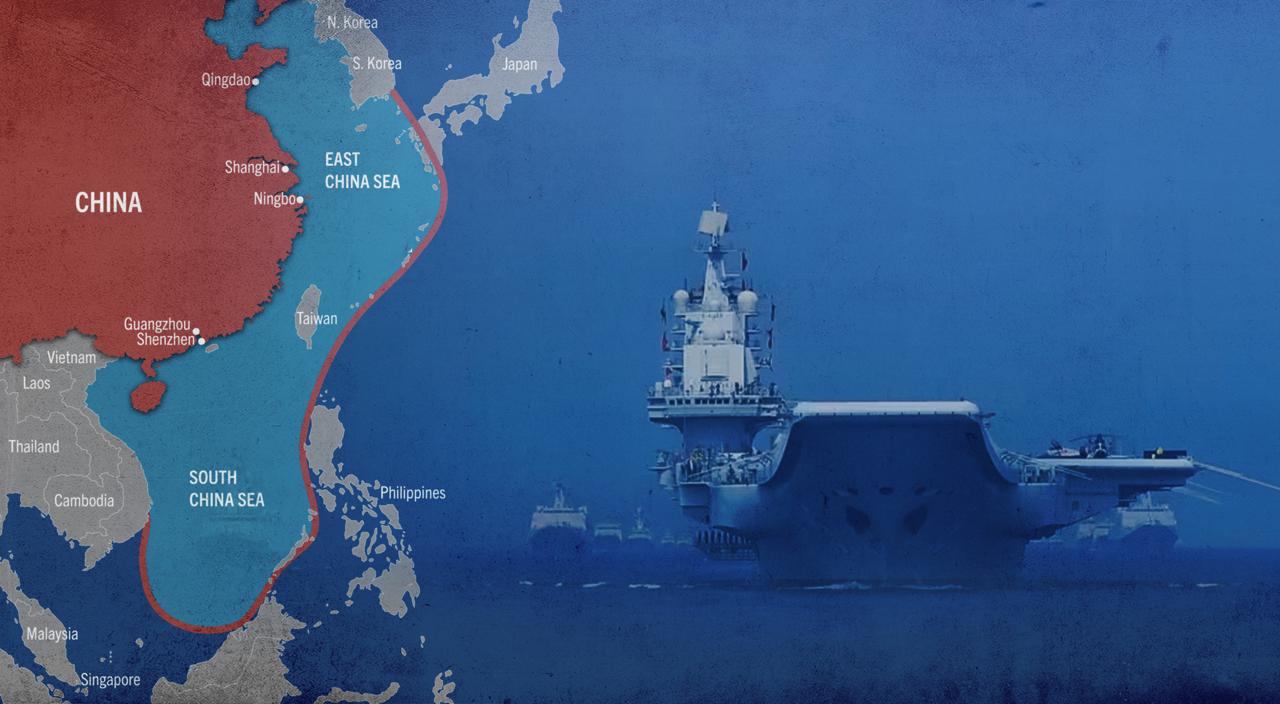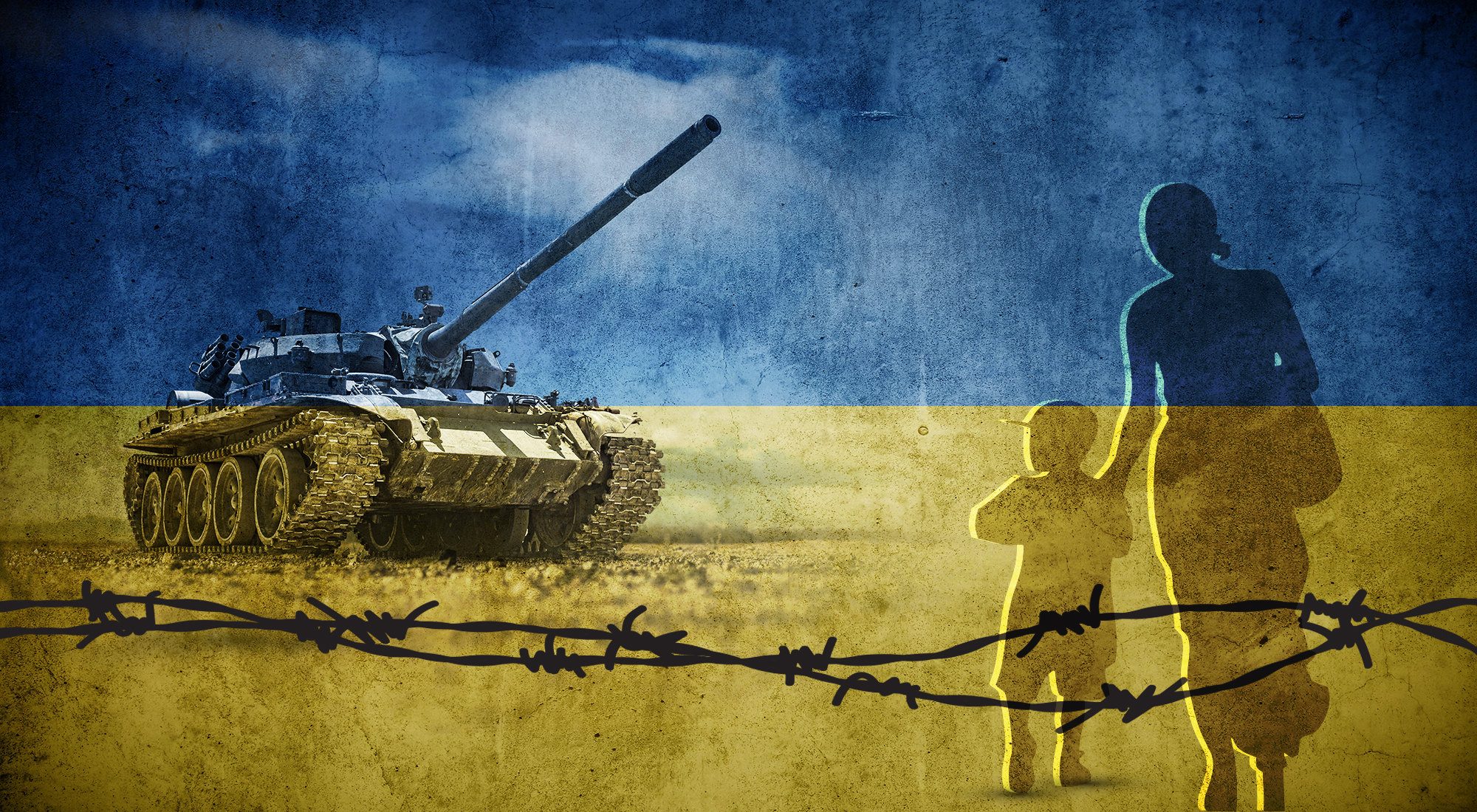Introduction
Weeks after the end of the 45-day war[1] between Azerbaijan and Armenia, leaders of Armenia, Turkey, Azerbaijan, and Russia started to make statements supporting the normalization of relations between Armenia and Turkey. After months of deliberations, the leaders of Armenia and Turkey appointed special representatives to start negotiations in December 2021. Since January 2022, the special representatives have met four times: the first meeting was held in Moscow while the subsequent ones took place in Vienna. Given the history of past negotiations, both experts and politicians have been cautious in their assessments of whether this effort could be any different to the previous ones.
Over the past three decades, discussions have not gone beyond speculations about the normalization of relations and the opening of the border. As a result, discussions never reached the point of addressing questions like: What do we do after the opening of the border? What is the sociology of the people across the border? What are their expectations? The list of questions is rather long, and this paper will not venture to answer all of them. Since the historical,[2] diplomatic[3] and geopolitical[4] aspects of the current phase of negotiations have been discussed elsewhere, this analytical piece will attempt to shed light on the practical aspects of the border opening and the establishment of diplomatic relations as well as possible issues the process may face.
Border politics: Assessing the implications
Armenia and Turkey share a 311–km long border. There are two border crossing points: Akhurik (Armenia)/Doğu Kapı (Turkey) west of Gyumri, Armenia’s second-largest city; and Margara (Armenia)/Alican (Turkey) southwest of Yerevan. For more than 100 years, the border between Armenia and Turkey has had a peculiar fate. From the signing of the Kars Treaty in 1921[5] up until the late 1930s, Turkey had a consulate in Leninakan (nowadays Gyumri)[6] and the Soviet Union had one in Kars. Following the deterioration of relations between Moscow and Ankara in the late 1930s, the consulates were closed and border crossings were kept to a bare minimum. In the early 1990s, although the border remained officially closed, trains were still running across the border and Armenian and Turkish citizens were able to exchange visits. However, in April 1993, that was stopped, too.
Over the last decades, using various platforms and opportunities, Ankara has set several preconditions for the normalization of ties with Armenia, which have included but have not been limited to the following:
- The Republic of Armenia and Armenian Diaspora should halt the worldwide campaign to recognize the genocide and renounce any claims on Turkey over land and property compensations and reparations.
- Armenia should agree on establishing a committee of historians to examine the facts about the Armenian Genocide and “establish the truth”.
- Turkey periodically insists on Armenia (re)acknowledging the existing border with Turkey, in accordance with the 1921 Kars Treaty.
- Armenia should recognize Azerbaijan’s territorial integrity and, thereby, close the Karabakh question.
- Turkey periodically entertains — sometimes through Azerbaijan— the idea that Armenia should revise its Declaration of Independence adopted in 1990 (and Constitution of 1995), as the document indicates that the Armenian Genocide was committed in Western Armenia, which constitutes the eastern regions of present-day Turkey.
- Turkey occasionally demands the closing down of Armenia’s Metsamor Nuclear Power Station, located a few kilometers from the Armenian-Turkish border.
- Turkey has recently reintroduced another precondition: establishing a corridor between the Nakhijevan Autonomous Republic, an exclave of Azerbaijan, and mainland Azerbaijan through Armenia’s sovereign territory in the Syunik province in the south.
The closure of the border shaped Armenia’s economy and trade infrastructure. Deprived of Turkey’s highway and railway networks as well as access to the Black Sea and Mediterranean Seaports, post-Soviet Armenia had to deepen its trade relations with Russia and Iran. As a result, Georgia became Armenia’s vital transit route to Russia and the rest of the world, with around 75% of its foreign trade passing through Georgia and the remaining part through Iran.[7] This ratio has shaped and solidified Armenia’s trade infrastructure for the last 30 years. Armenia’s trade with Europe and the US was mainly conducted through the two Georgian ports of Batumi and Poti. The Upper Lars/Stepandzminda, the only land connection between Russia and Georgia, also became an important crossing point, allowing Armenia to maintain connection and trade with Russia. With 80% of Armenia’s border closed, it is of vital importance for it to open its borders, boost competition, attract investments, diversify its trade routes and communication lines, and develop infrastructure.
Armenia borders with three eastern provinces of Turkey, Ardahan, Kars, and Iğdir, which combined have a total population of around 580,000 people.[8] On the Armenian side, there are four provinces, Shirak, Aragatsotn, Armavir, and Ararat, with a total population of 870,000.[9] With a national poverty rate of 27% in 2020, the Shirak region is the second poorest province in Armenia, with almost 43% of the people living below the poverty line. The Aragatsotn, Armavir, and Ararat regions each have a poverty rate of almost 33%, making them the fourth, fifth and sixth poorest provinces, respectively. Meanwhile, the poverty rates in the three Turkish regions fluctuate between 20% and 23%, making them the most impoverished regions of Turkey after the Kurdish-populated provinces in the country’s southeast. High numbers of unemployment and migration continue to impact the structure of the local economy. In 1985, the population of the Kars province was over 700,000, while in 2020 it shrank to 280,000, ranking third in out-migration among Turkish provinces.[10]
These numbers suggest that opening the border and developing economic relations will significantly impact the neighboring seven provinces of the two countries. Whether the impact will be positive or negative depends on the concerned parties’ political, structural, and institutional features. Several factors suggest a more careful assessment of the possible implications of an open border.
Why does Kars matter?
If and when the border opens, the prospects of which remain quite distant as of now, four cities across the border are set to play an important role: Kars and Iğdir on the Turkish side and Gyumri and Armavir on the Armenian side. The city of Kars, the former capital of the Armenian kingdom of Bagratid, which was inhabited by Armenians since antiquity until the early 1920s, is just 50 kilometers away from the Armenian border. Kars and Ani, another capital of the Bagratid Kingdom, which once was known as the “City of 1001 churches,”[11] hold paramount historical and symbolic significance for Armenians. Kars and Gyumri have similar architecture and are widely seen as twin-sister cities which grew exponentially in the late 19th and early 20th centuries. Naif Alibeyoğlu, the former mayor of Kars between 1999 and 2009 and a staunch defender of opening the border, cherished high hopes that the opening of the border would develop the socio-economic conditions of the city and province. To prove his intentions, he inaugurated the installment of a monument named “Humanity” in one of the former Armenian districts of Kars. Two giant human figures were facing each other, extending their hands of friendship. However, Erdoğan never allowed the memorial to be completed calling it “monstrous”, and when Alibeyoğlu lost the local election in 2009, the incomplete monument was dismantled and removed in 2011.
Kars also holds special importance for Azerbaijan. In September 2004, Azerbaijan opened a Consulate General in Kars. For the last 18 years, it has carried out many activities in the eastern provinces of Turkey. In addition to the duties that any general consulate would carry out, the mission of Azerbaijani diplomats in Kars went beyond serving the citizens of Azerbaijan or promoting Azerbaijan in Turkey. The Consulate General has carried out extensive anti-Armenian propaganda, financing various initiatives aimed at promoting negative views about Armenia and its people. Activities included, among others, promoting historical sites where Armenians allegedly committed atrocities against the local population; assisting right-wing nationalist candidates who advanced anti-Armenian political platforms; and orchestrating protests against the opening of the Armenian-Turkish border. Azerbaijan’s ultimate objective behind these steps was to nourish anti-Armenian sentiments and keep them alive. Moreover, the Consulate’s mission and scope of influence has gone beyond the Kars province, with its activities covering several other eastern and southeastern provinces. The provincial leaders always attend these activities and echo the statements of Azerbaijani diplomats.
Kars has also become a focal point for many trilateral activities of Turkey, Azerbaijan, and Georgia. The three countries organize various events, including joint military drills and economic forums. In 2017, the railway connecting Georgian Tbilisi and Kars through Akhalkalak was inaugurated, establishing a railroad connection between Baku and Kars. This transportation project effectively sidelined the existing – though not in use since 1993 – railway connection between Tbilisi and Kars through Gyumri, built in 1899.[12] If and when normalization occurs, Armenia will need to renovate and modernize the entire railway system. This should be done gradually while putting some pressure on the Russian side – which has concessional ownership of Armenia’s railway system – to invest in modernizing the outdated infrastructure. In order for the Kars-Gyumri-Tbilisi route to compete with the Kars-Akhalkalak-Tbilisi section, it will also need a gauge-switch terminal and logistics center on the border given the difference between the two types of railways systems. While Turkey has a 1435-mm gauge, the Armenian railway system, like in most of the post-Soviet space, has a track gauge of 1520-mm. The Kars-Akhalkalak-Tbilisi railway was built not only to connect Azerbaijan and Turkey but also to compete with the Trans-Siberian Railway, by organizing regular container traffic between Turkey and Eurasian countries. Thus, the Kars-Gyumri-Tbilisi railway connection may become only an extension of it if the Russian-Georgian railway link through Abkhazia – interrupted as a result of the Abkhazian war in 1993 – continues to stay inoperative. While Russia has sent cargo to Turkey via Azerbaijan and Georgia, opening the Abkazian railway will increase the utility of the Armenian railway network. According to a post-2020 war trilateral (Armenia, Russia, Azerbaijan) statement,[13] the regional transportation networks are to be reopened – a prospect which reaffirms the need to invest in reconstructing and modernizing Armenia’s outdated railway system.
The local politics in the three provinces will also play an essential role. During the 2019 local elections,[14] the pro-Kurdish People’s Democratic Party (HDP – Halk Demokrasi Partisi) won the mayor’s offices in Kars and Iğdir, and the Republican People’s Party (CHP – Cumhuriyet Halk Partisi) won Ardahan’s mayoral race. However, the ruling Justice and Development Party (AKP – Adalet ve Kalkınma Partisi) formed the majority in the Ardahan and Kars provincial assemblies, while the HDP won the assembly race in the Iğdir province. The HDP’s position on Armenian-Turkish relations differs significantly from mainstream Turkish politics, as it never joined in the pro-Azerbaijani statements made by Turkish political parties. The HDP has always carried out a more balanced approach towards Armenia and the Armenian people. Given the increased Azerbaijani activities in the eastern provinces and the expanded political influence of the HDP, one could anticipate that Azerbaijan’s influence in Kars and Iğdir may be tamed if any anti-Armenian protests are initiated, as was the case in 2009 when Turkey and Armenia initiated the second rapprochement. In the past, Azerbaijan relied heavily on the ultra-radical Nationalist Action Party (MHP – Milliyetçi Hareket Partisi) and, in the future, their local resources may be invoked again should Azerbaijan decide to stop Armenians using the communication infrastructure of Kars.
If the border opens, the cities of Armavir and Iğdir are set to cooperate closely, given their geographic proximity and historical interactions. Iğdir, a strategically located city just a few kilometers away from Turkey’s borders with Iran (Gürbulak-Bazargan crossing), Nakhijevan Autonomous Republic of Azerbaijan (Dilucu-Heydarabad crossing), and Armenia (Alican-Margara crossing) will benefit from the border opening. However, unlike Kars, it is not connected to the railway network yet, thus its appeal will be limited in the short term. To boost tourism and border trade, Armenia needs to modernize its border infrastructure, build customs offices, renovate the roads leading to the crossing points, and update its border protection methods and technology, currently conducted together with the Border Guard Troops of Russia’s Federal Security Service. The European Union (EU) has previously provided help and assistance to modernize the crossing points on the Armenian-Georgian border, and may also be interested in financing the building of the border infrastructure. Armenia, a member of the Eurasian Economic Union, will have a border with Turkey, a member of the EU Customs Union, hence building modern customs offices on both sides of the Armenian-Turkish border will also help the EU reassert itself in Armenia and Turkey’s eastern provinces, an area from which it has been absent. Another idea, long championed by some observers, would be launching a Free Industrial Zone, which would include the Gyumri-Kars-Van triangle. Armenia and Turkey’s eastern provinces can create and ultimately benefit from favorable tax and regulatory agreements. Over the past years, Georgia has successfully launched three Free Industrial Zones, attracting foreign investments and creating favorable business conditions. Armenia has observed Georgia’s example closely enough and can learn from that example.
For over a century, the Armenian nation has been deprived of any leverage to preserve what is left of its cultural heritage on the territory of present-day Turkey.[15] Once the relationship is established, an opportunity may emerge to raise the question of joining efforts with Turkey and the international community to protect the Armenian monuments in eastern Turkey as well as in Istanbul and other major cities. For decades, hundreds of churches and cultural assets have been intentionally and unintentionally damaged. They became targets for looters seeking gold and treasure, which Armenians allegedly buried before being deported from their homes during and after the First World War. The church stones and graveyards became construction materials, and the conditions of the standing ones deteriorated due to neglect while some others were damaged beyond repair. International organizations dedicated to research and preservation of cultural heritage – including UNESCO, the EU, and local stakeholders – could be involved in the restoration process.
Turkey has been and remains a complex partner for Armenia. The closed land border between Armenia and Turkey epitomizes profound historical grievances deriving from the Armenian Genocide, mutual suspicions, dehumanization, and the antagonism existing between the two nations. The closed border is more than a physical barrier: its sealed nature shapes the minds, worldviews, perceptions, and approaches of the people living on both sides of the border, exacerbating the long-standing stereotypes of either nation. During the past three decades, relations between Armenia and Turkey went through several stages. At times, there were high expectations that the leaders of the two countries would produce an accord of enduring substance; in other instances, a Turkish invasion seemed imminent. The zigzagging of bilateral relations reflects the depth and width of the complexity of relations between the two neighbors.
There is no doubt that the opening of the border and socialization of the two societies will require a toolbox that both nations have yet to develop. The agenda of peace that Armenia’s current political leadership under Pashinyan has been advancing since mid-2021 has at least three addressees.[16] The first one is Azerbaijan, Turkey’s staunch ally, which, emboldened by the military victory in the 2020 war, is eager to finish the Karabakh conflict once and for all. Azerbaijan, for that matter, interprets Armenia’s peace agenda as the final stage to giving up on its demands concerning Karabakh. Moreover, the September 13-14 military aggression on Armenia’s sovereign territory demonstrated that the territory of Karabakh is only one part of Azerbaijan’s expansionist regional policy agenda as it presents territorial demands on Armenia’s internationally recognized borders. The second addressee is the Turkish political leadership, which seems ready to establish diplomatic relations with Armenia only when all the Azerbaijani conditions are met. The Armenian society, too, is among the recipients of the peace agenda message. While the supporters of the regime unequivocally embrace any agenda coming from the Prime Minister, the intellectuals and political opposition raise doubts about the long-term implications of such policies, considering them not fully calculated and calibrated. While possible peace between Armenia and Azerbaijan may take some features of any post-conflict reconciliation, possible peace between Armenia and Turkey defies any conventional ways of thinking and acting. It is filled with lingering ambiguity and a mishmash of geopolitical considerations involving Armenia’s relations Russia, Turkey’s relations with Azerbaijan and Georgia, and Armenia’s relations with Georgia and Iran. While exiguous efforts will harm the process, it is generally wise to keep expectations in check. The sharpest disagreements of the past and present will continue to define the debates of the future.
Conclusion
The South Caucasus region has long remained intact from geopolitical antagonism. However, with the opening of the last closed regional border, a range of possibilities will emerge. The normalization of relations will generate interests in various geopolitical centers as the opening of the border will change the status quo in the region. It will surely challenge and, in the long run, diminish Russia’s competitive edge in the region. Unless priorities are shifted and commensurate policies adopted, Russia will have to share its unchallenged dominance in Armenia, like it unwillingly did by allowing Turkey to be part of the Joint Monitoring Center in the vicinity of Karabakh. With its power projection strategy visibly reduced and its economy shrinking under the unprecedented sanctions, the aftereffects of the border opening will have long-term implications for Russia’s presence not only in Armenia, but also in the wider region. These considerations will also impact Russia’s reaction when Armenia opens up to Turkish business and determine how regional communications will be exploited. Russia strives to stay relevant to regional politics by trying to keep other stakeholders at bay. For how long Russia will be able to sustain this will also determine the fate and prospects of the projects that the opening of the border will entail.
References
[1] The 2020 war in Artsakh/Karabakh has also been referred to as the”‘44-day war”, ‘Six-week war”, “Patriotic war”, “Azerbaijani aggression against Armenia and Artsakh” etc. This article uses “45-day war” for the following three reasons. The war started on September 27 and finished on November 10, which makes 45 days. The Azerbaijani side quickly coined it a “44- day war” to make the final day of the war – when the city of Shoushi came under its complete control – coincide with National Flag Day, celebrated on November 9th. The trilateral ceasefire statement signed by Armenia, Azerbaijan, and Russia, in the final hours of November 9th, entered into force in the early hours of November 10th, which again makes it 45 days since September 27th
[2] Vahram Ter-Matevosyan, “Deadlocked in History and Geopolitics: Revisiting Armenia-Turkey Relations,” Digest of Middle Eastern Studies 30, no. 3 (2021): 155-169, https://doi.org/10.1111/dome.12242.
[3] Vahram Ter-Matevosyan, “Armenia and Turkey: Rapprochement 3.0?” Valdai Discussion Club, January 27, 2022, https://bit.ly/3BXxDMk.
[4] Vahram Ter-Matevosyan, Armenia and Turkey: Unpacking Negotiation Strategies and Political Conjunctures, European Neighborhood Council Analysis, January 2022, https://bit.ly/3BWkOBI.
[5] Treaty of Kars, https://bit.ly/3S16xsW.
[6] Vahram Ter-Matevosyan, Turkey, Kemalism, and the Soviet Union: Problems of Modernization, Ideology and Interpretation (Cham: Palgrave Macmillan, 2019).
[7] George Tarkhan-Mouravi, “Armenia and Georgia: Resilient Relationship,” Heinrich Boll Stiftung, December 15, 2017, http://bitly.ws/uCVP.
[8] Türkiye İstatistik Kurumu, “Toplam Nüfus (Kişi),” https://cip.tuik.gov.tr/.
[9] Statistical Committee of the Republic of Armenia, “The Number of Armenia’s Permanent Population,” http://bitly.ws/uCW5.
[10] Mucip Demir, “Kars Ilinin Nüfus Gelişimi ve Başlica Demografik Özellikleri,” Eastern Geographical Review 34, 2014, 127-155, https://bit.ly/3BvVAJ4.
[11] Antonio Ratti, “This Abandoned Site Was Once the ‘City of 1001 Churches,” National Geographic, April 9, 2020, https://on.natgeo.com/3BX2QPJ.
[12] Sona Mirzoyan and Candan Badem, The Construction of the Tiflis-Aleksandropol-Kars Railway (1895-1899), Institute for Historical Justice and Reconciliation (The Hague: IHJR, 2013).
[13] President of Russia, “Statement by the President of the Republic of Azerbaijan, the Prime Minister of the Republic of Armenia and the President of the Russian Federation,” November 10, 2020, http://bitly.ws/uCX8.
[14] “Local Elections 2019,” Daily Sabah, https://bit.ly/3BxTCHY (accessed August 24, 2022).
[15] Vendi Jukić Buča, Kristina Gwirtzman, and Christina Maranci, “Armenian Ecclesiastical Sites in the Kars Province (Turkey): Current State, Preservation and Revalorization,” Heritage & Society 13, no. 3 (2020): 165-197, https://doi.org/10.1080/2159032X.2021.1968220.
[16] Hovhannes Nikoghosyan and Vahram Ter-Matevosyan, “From ‘Revolution’ to War: Deciphering Armenia’s Populist Foreign Policy-making Process,” Southeast European and Black Sea Studies (2022), https://doi.org/10.1080/14683857.2022.2111111.








